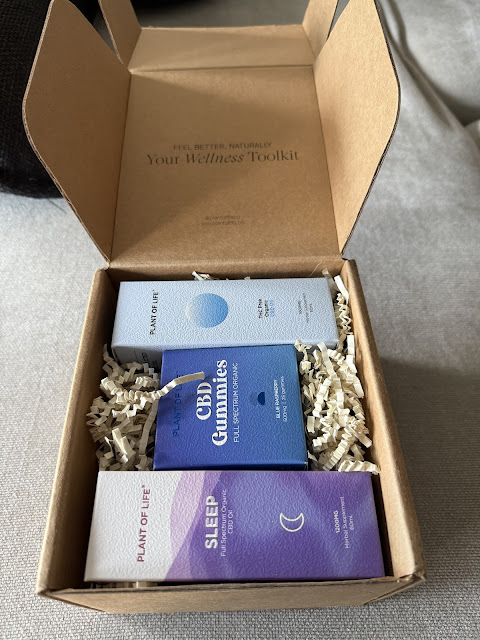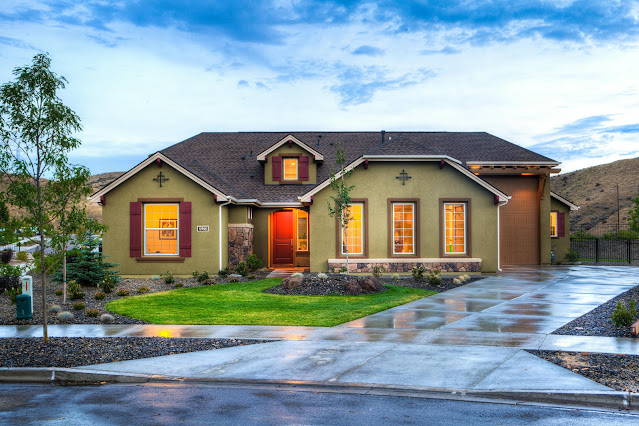Upgrading your home doesn’t have to be complicated, and with the right improvements, you can make your living space both functional and energy-efficient. With energy costs climbing and environmental concerns growing, making smart upgrades can lead to noticeable savings and a more eco-friendly lifestyle. Here are actionable ways to enhance your home’s efficiency today.
Monday, 30 June 2025
Saturday, 28 June 2025
From Stress to Sleep: How My THC & CBD Journey Turned into a Full-Body Wellness Shift
After I published “Taking the Plunge: My Journey Into THC & CBD for a Calmer, Relaxed Mind,” I was overwhelmed by the response. So many of you reached out to share your stories, ask questions, or simply say, “I’ve been thinking about this too.” And honestly? That’s exactly why I opened up in the first place.
Because like so many people, I was running on empty—mentally drained, physically tense, and desperate for something that wouldn’t leave me feeling worse in the long run. I was tired of numbing my stress or chasing sleep with medications that only masked the problem. I needed real, natural support. I had always stayed clean and sober for my kids and now that they are teens I am able to have a few drinks every now and again as well as enjoy a nice joint, or vape without feeling guilty. I needed to find something that would balance with my life after work though.
And that’s when I found my way to CBD and THC—and more recently, to a brand that truly impressed me: Plant of Life.
How Plant of Life Changed the Game for Me
I’ve tried a few different products over the past year, but nothing has hit that perfect balance quite like Plant of Life. They make full-spectrum CBD + THC products that feel thoughtfully crafted—not just hyped up or thrown together like some brands out there.
Their Blue Raspberry CBD + THC Gummies were the first product I tried—and honestly, they’re delicious. But more importantly, they work.
Each gummy delivers just the right dose to help take the edge off my anxiety during the day or help me unwind in the evening. There’s no grogginess, no racing heart, no “am I too high?” spiral—just calm, clarity, and relief. They’ve become a part of my regular wellness routine, and I truly look forward to them.
Sleep & Pain Support I Can Trust
I also started using Plant of Life’s CBD + THC oils, which have made a noticeable difference in my sleep and inflammation levels. Their Sleep Formula has helped me fall asleep faster, stay asleep longer, and actually wake up rested—something that felt impossible before. I used to lie awake for hours with my mind spinning. Now, sleep comes gently, and I wake up with energy instead of exhaustion.
So far the CBD oil has helped me to tackle the day without as much pain in my legs and joints? A lifesaver. Whether it’s muscle tension, back pain, or the general wear-and-tear of a busy life, I’ve found that just a few drops go a long way. It’s reduced the need for ibuprofen and Tylenol and given me that comforting feeling of being in control of my body again.
Why I’m Not Looking Back
I used to rely on whatever was easy and available—painkillers, sleep aids, quick fixes. But they often made me feel worse in the long run: foggy, disconnected, dependent.
With Plant of Life, I feel like I’ve found a natural, effective path to healing that supports my body and mind rather than dulling them. It’s not about getting high. It’s about getting well.
What I’ve Learned (and What I’d Share with You)
- Quality matters: Not all CBD and THC products are created equal. Plant of Life is transparent, lab-tested, and deeply committed to quality.
- Taste isn’t just a bonus: Blue raspberry might sound like a treat—and it is—but having something enjoyable makes sticking to your wellness routine feel easy.
- Less really is more: You don’t need a ton to feel the effects. Start low, go slow, and find your personal sweet spot.
- This is about you: Your journey with CBD and THC will be unique. It’s not one-size-fits-all—and that’s the beauty of it.
Final Thoughts
I never expected a few simple products to shift my wellness routine so drastically. But Plant of Life has helped me manage stress, get better sleep, and soothe physical discomfort in a way that feels empowering.
If you’re struggling with anxiety, pain, or sleep and looking for something that actually helps—without harmful side effects—I genuinely encourage you to explore this path. Just like I did.
You deserve rest. You deserve relief. And with the right support, it’s absolutely possible.
Friday, 27 June 2025
DIY vs. Professional Appliance Repair: When to Call an Expert
Every so often, a household appliance throws a wrench in your routine – be it a washing machine that won’t spin or a refrigerator that suddenly warms up. You’re left wondering: Should you grab the toolkit and try fixing it yourself, or is it time to call in the pros? In this guide, we break down the scenarios that call for a DIY approach versus those that demand professional intervention.
DIY Repairs: Tackling a repair on your own can be gratifying and cost-effective. With online tutorials, video guides, and a little elbow grease, many common issues are within reach for the handy homeowner.
Professional Repairs: When the problem is complex, safety is a concern, or you risk voiding a warranty, expert technicians bring specialized tools, training, and guarantees that DIY efforts simply cannot match.
- Minor Issues: For example, a clogged filter in your dryer or a loose door seal on your refrigerator can often be remedied with a quick fix.
- Availability of Clear Guidance: If there’s a well-documented repair guide or video tutorial and you have basic tools, taking matters into your own hands can save you money.
- Non-Safety Critical Problems: Tasks that don’t involve high voltage, pressurized systems, or intricate electronics are usually safer for DIY enthusiasts.
Some issues are best left to professionals. If you encounter any of the following, it’s wise to call in an expert:
- Persistent Error Codes: Modern appliances often display diagnostic codes – if these persist despite basic troubleshooting, professional help is advised.
- Complex Mechanical or Electrical Failures: Problems involving the magnetron in microwaves, faulty wiring, or compressor malfunctions require technical skills and proper safety precautions.
- Warranty Concerns: Attempting a DIY fix might void warranties or service agreements. When your appliance is still under warranty, it pays to use certified repair services.
- Safety Red Flags: If you smell burning, see sparks, or experience frequent tripped breakers, don’t risk injury – call a professional immediately.
| DIY Repair | Professional Repair |
|---|---|
| Lower cost if you have the tools and expertise | Higher cost but includes warranty and expertise |
| Can be done on your own schedule | Faster turnaround and guaranteed results |
| Risk of further damage if done incorrectly | Reduces risk of voiding warranties or causing safety hazards |
Whether you decide to roll up your sleeves or pick up the phone, here are some strategies to guide your decision:
- Research: Check manufacturer guidelines and online reviews. Forums and how-to videos can give you a good sense of the difficulty level.
- Assess Your Skills: Be honest about your mechanical aptitude and available time. Not every repair is suited for a novice.
- Budget Wisely: Consider the potential cost of a mistake if a DIY attempt goes wrong versus the fixed cost of hiring a professional.
- Use a Trial Service: Many repair companies offer initial consultations or diagnostic visits. This can help you understand the scope of the problem without a full commitment.
Let’s consider two examples:
Case 1: A homeowner notices a minor leak in the dishwasher. After checking the user manual and watching a couple of online tutorials, they replace a simple rubber gasket – a task that took less than an hour and cost only a few dollars.
Case 2: In another instance, a refrigerator displays a recurring error code and isn’t cooling properly. Despite several attempts at resetting and cleaning, the issue persists. In this case, calling a professional not only resolved the problem quickly but also preserved the appliance’s warranty, saving the homeowner from future headaches.
Deciding between a DIY fix and professional repair ultimately hinges on the complexity of the problem, your own expertise, and the potential risks involved. While tackling minor issues yourself can be both economical and satisfying, knowing when to call an expert ensures safety and long-term reliability. With a clear understanding of your appliance’s symptoms and the pros and cons of each approach, you’re empowered to make an informed decision that keeps your home running smoothly.
For further insights and detailed repair guides, Read more.
Are You In A Good Place To Start Investing In Property?
We all know that property investment can be a very effective and safe kind of investment to make, and there is no doubt that it’s one of the best things you can ever hope to do with your money. However, that doesn’t mean that it’s always a good idea to just dive into it, and there might eb things that you need to get ready before you get into it properly. Let’s take a look at some of the things you might want to consider to help ensure that you are in a good place to start investing in property.
Getting Your Personal Finances In Order
This is the first thing you need to focus on to help ensure that you are ready to start investing in property. If you do not have your house in order, so to speak, then you are not going to be in a good position to start investing. It’s hugely important to make sure that you are thinking about this and that you are doing all you can to really be able to get it right. Have you got a steady income, a strong credit score, and low personal debt? If not, it might not be the time to start investing.
Understanding The Risks
Although property is relatively safe as a form of investment, it is never risk-free, and you need to ensure that you understand that fully and that you are ready for the risks before you get started. Otherwise, they will come as a huge shock, and if you are not prepared for them you might find that you struggle to really make it work. Vacancies happen. Tenants damage property. Interest rates can be unreliable. These are all things you need to be prepared for both mentally and practically if you are to succeed with your investment.
Are You Clear On Your Goals?
Before you just start looking at property listings, you might need to make sure that you are clear on exactly what you hope to achieve from your investment portfolio. Different investment strategies require different approaches, and you’ll have to bear that in mind from the start. Are you looking for long-term appreciation, cash flow from rental income, a fix-and-flip, or something else? You have to be really clear on this if you hope to make it a success and to make it work for you.
Have You Researched The Market?
It would be foolish to start investing in a market that you know nothing about. It’s really important that you are fully aware of the market and you know as much as possible about it and how it is likely to function. If you don’t, then you might struggle to really make this work, and it could be that you end up in a worse situation. So spend some time researching the market and you should find that this is going to be a huge help and will help you to feel so much more prepared and ready.
Thursday, 26 June 2025
Celebrating Brooke: A Proud Mama’s Reflection on Her Journey from Middle School to High School
Watching your child grow is one of the most humbling and awe-inspiring experiences as a parent. Today, I want to take a moment to celebrate my incredible daughter, Brooke, for reaching a huge milestone—she’s officially completed middle school and is heading into high school this fall. And I couldn’t be more proud.
Graduating from middle school isn’t just about walking across a stage or getting a report card. For me—and for our family—it’s about something so much deeper. It’s about watching Brooke become a stronger, smarter, more self-aware young woman. It’s about witnessing her navigate friendships, peer pressure, changing emotions, new responsibilities, and the rollercoaster that is adolescence—and doing it with courage, resilience, and heart.
We had such a rough last half of the year it’s so nice to see we made it out in one piece and have nothing but positive energy going forward.
Sure, grades are part of the picture, but they are not the whole story. What matters more to me is that Brooke is growing into someone who is thoughtful, compassionate, and confident in who she is. That she’s learning to speak up for herself, stand by her values, and keep going even when things get tough. Success isn’t about being the top of the class; it’s about showing up every day, learning something new, and trying to become a little better than yesterday.
From the very beginning of their educational journey, I’ve always encouraged my kids to try their best—but I’ve never made perfection the goal. I don’t believe in pushing my kids so hard they lose their joy or burn out before they even know who they are. I want them to feel supported, not pressured. Challenged, but not crushed. I believe in growth, not just achievement.
I encourage friendships because I know how much the right people can shape your journey. Friends who lift you up, who let you be yourself, who help you laugh on the hard days and cheer for you on the good ones—those are the people who make school worthwhile. And I always try to maintain a respectful, open relationship with my kids. I want them to know they can come to me with anything: their wins, their worries, their failures, their questions. I want to walk alongside them, not above them.
Brooke, you’ve grown so much over the last few years. You’ve shown strength, maturity, and compassion in ways that amaze me. High school will bring new adventures, new challenges, and so many opportunities—and I know you’re ready for all of it. Keep being you. Keep trying your best. Keep surrounding yourself with people who see your light. And know that no matter what, I’m so proud of the person you are becoming.
Here’s to this next chapter—let’s go, high school! 💖🎓
Wednesday, 25 June 2025
How To Dig Yourself Out Of A Financial Hole
In the current climate, digging yourself a financial hole can happen seemingly overnight.
In fact, a recent study found that 60% of Americans would be unable to afford an unexpected bill of $1,000. Fortunately, there are many steps that you can take to get yourself out of this situation, saving you a great deal of stress and anxiety. Read on to find out more.
Photo by Alexander Grey on Unsplash
Put a budget in place right away. While this may seem fairly obvious, more than two-thirds of Americans do not budget or track their spending, often landing themselves in difficult situations as a direct consequence of this. As such, the absolute best thing you can do for your finances right now is put a budget in place.
Write down a list of your incoming and outgoings, and figure out how much you can afford to spend each month. In some cases, this may mean that you need to go without some of life's little luxuries, at least until you find yourself in a better position financially. For example, you may have to start preparing more meals at home instead of eating on the go.
Ask for help. There are many scenarios in which asking the experts for help is necessary. For example, you wouldn’t try to do complicated plumbing work within your home without first hiring a plumber (or at least getting some advice). The same can be said when it comes to bettering your financial situation. For example, you could seek help from companies that offer comprehensive debt solutions, like Fox Miles. This will help you to see the light at the end of the tunnel, while also putting plans in place to better your financial situation every single day.
Find ways to reduce your grocery bills. Your grocery bills are likely one of your biggest weekly expenses, even if you’ve started taking meal prepping seriously. As such, finding ways to reduce them as much as possible can be a real game-changer.
One way in which you can achieve this goal is by hitting the shops close to closing time. This is because products that have reached their best-before date (but are still perfectly edible) will be heavily discounted at this time, allowing you to access higher-quality food for less. You may also be able to freeze the food you don’t want to eat right away.
Beyond this, having a shopping list in hand before you go shopping can also be useful. This is because you’re less likely to buy food or ingredients that will then be wasted, as you can plan out your meals (and your expenses) ahead of time. If you’re hoping to be as frugal as possible, consider buying store-brand products instead of those with more recognised labels. They often taste pretty similar, even if you have to add a little more seasoning to some of them.
Focus on repaying your debts. Once you’ve started saving money around the home, make sure that you start putting the money to good use. One way in which you can achieve this specific goal is by focusing on repairing debts, such as credit card bills, as opposed to adding to your savings account. This means that you can avoid being charged interest on what you owe, putting you in the best possible position moving forward. Furthermore, watching yourself get back into the green with these accounts will be a great feeling.
If you feel as though you’re likely to slip back into negative habits as soon as these debts are repaid, consider closing your account or putting a temporary block on it. This way, you’re less inclined to spend recklessly and won’t find yourself back at square one again within a few weeks (or days).
Find ways to have fun for free. One of the biggest challenges associated with saving money and raising a busy family is that it becomes a little more difficult to keep your kids entertained. However, this does not mean that it is impossible! In fact, there are plenty of ways in which you can have fun for free, whether that means visiting a local museum or doing something a little more adventurous, such as going horseback riding.
While there’s no shortage of options in this regard, you should keep an eye out for ways to cut the cost of other family activities where possible. For example, booking in advance online often allows you to save money at places such as theme or amusement parks!
You should also get into the habit of having fun at home as much as you can, especially when it comes to your own social life. For example, you could save a lot of money by inviting your friends round for a home-cooked meal as opposed to dining out, and this way you don’t have to miss out on any social activities!
Keep calm. If you’re worried about your finances right now, you aren't alone. Fortunately, there are plenty of steps that you can take to dig yourself out of this hole, no matter how far down you may have fallen. This includes:
- Putting a budget in place and making sure that you stick to it as closely as you possibly can
- Asking for help from experts who can help put you on the path to financial wellness, without fear of judgment
- Finding ways to save money on your biggest expenses, such as your grocery bills
- Focusing on repaying your debts, making this a priority whenever you have some extra money left over from your budget or income
- Finding ways to have fun for free, so that you don’t have to spend the eternity of your budget each month or deal with bored children
Following the steps above is a great starting point for those looking to get in control of their finances before the summer is out. Do you have any tips of your own? Be sure to leave them in the comments below!
Maximizing Space in Small Kitchen Layouts
Struggling to make the most of your kitchen’s limited footprint? If you’re in a bustling city apartment or an older home with a small kitchen, you’re not alone. Maximizing space in small kitchen layouts requires creativity, planning, and a few smart tweaks. Here’s how to transform your space into a functional and organized haven.
Maximizing space often comes down to smart design choices, and exploring effective storage solutions for kitchens can make a significant difference in both functionality and aesthetics. Consider the often-overlooked vertical space in your kitchen. Adding shelves or magnetic knife strips can help free up counter space.
Consider designing custom cabinets that extend up to the ceiling can unlock extra storage opportunities. This approach helps keep your counters clear and essentials within reach. Tall shelving units or stackable organizers can also make use of every available inch efficiently.
Nothing wastes space faster than disorganized drawers or cabinets. Keep your utensils, lids, and containers tidy with drawer dividers, expandable racks, and pull-out shelves. Lazy Susans are fantastic for cabinets, making sure nothing gets lost in the back. Using organizers lets you maximize every drawer’s function while reducing daily clutter.
From pots and pans to mugs and utensils, hanging items can free up a surprising amount of space. Install a pegboard or add wall-mounted hooks to hang everyday essentials. You can even use the inside of cabinet doors for additional hooks or racks! It’s a simple and budget-friendly way to keep things handy without cluttering counters or drawers.
Choosing smaller, multifunctional appliances can make your kitchen much more efficient. Look for slim refrigerators, compact dishwashers, or a combination microwave and convection oven. Not only do these save space, but their streamlined designs can also enhance a kitchen’s aesthetic appeal.
Visual tricks can help make a kitchen feel larger. Use light colors or glossy finishes for cabinets and walls to reflect natural and artificial light, creating the illusion of openness. Incorporating glass-front cabinets or mirrored backsplashes helps amplify the effect even further, making the space feel airy and inviting.
You don’t need to compromise on functionality or style when transforming a small kitchen. With the right strategies and thoughtful adjustments, maximizing space in small kitchen layouts is possible. It’s a rewarding design challenge.
How To Create a Clutter-Free Home Office
Balancing work and family life can be challenging, especially for remote-working parents, but a clutter-free home office can make all the difference. An organized workspace boosts productivity and maintains harmony at home.
Tuesday, 24 June 2025
4 Tips to Create A Comfortable Living Environment for Seniors
Creating a space for seniors is all about building comfort, emotional ease, and accessibility into everyday life. You might look to chase certain home trends and keep up with modern aesthetics, but that’s not everything. A well-designed home will dramatically improve safety levels and the way in which an older adult is supported. As people age, their needs change in significant ways. Their sensory sensitivity changes, as well as their mobility and routine.
Their home may have worked perfectly once upon a time, but now it likely presents unexpected challenges. That’s why it’s crucial to think about the environment carefully and intentionally. Of course, it’s about eliminating hazards, but it’s also about designing with foresight and creating impactful improvements. These changes don’t need to be expensive and overwhelming, fortunately. With a little bit of planning, you can make any living space perfect for your elder relatives. Here are four targeted, practical tips that can help to create the supportive environment they need:
Improve Lighting Throughout
Declining eyesight is a normal part of aging. Inadequate lighting will only increase the risk of accidents. It’s a good idea to layer different types of light to improve clarity. You can use task, ambient, and accent lighting to make this happen. Think about improving the lighting of hallways, bathrooms, and staircases. Motion-sensor nightlights will help them with navigation. With a well-lit space, it is easier on the eyes and offers peace of mind. The space suddenly becomes more helpful to seniors as they look to move with more confidence each day.
Make Mobility As Smooth As Possible
Navigation should never be exhausting. Keep your walkways clear and remove rugs that slide. In homes that have stairs, think about supportive modifications such as stairlifts for seniors, which can reduce a lot of physical strain. Even the smallest shifts in the layout can also make a big difference. Reposition furniture and widen parts if you are able to.
Choose Furniture With Intention
When you think about comfortable furniture, you may rush towards soft, deep options. Of course, they are very inviting, but they can actually be difficult for seniors to use. It’s a good idea to choose pieces with sturdy armrests and firm cushions, as they will suit them more. Choose seating that will promote their posture and balance. Nightstands and tables need to be the right height and stable enough to lean on. Comfort is obviously about relaxation levels, but it’s also about ease and utility. You have to think about how each choice interacts with the individual.
Enhance Calm With Reduced Noise
With a soothing environment, you will support their well-being a lot more. Noises from traffic or appliances can agitate older individuals with heightened sensitivity. You can bring in soft furnishings and rugs in order to absorb sound and reduce echoes. By creating acoustic comfort, you will improve levels of focus and relaxation. They will spend a lot of time at home, so this kind of decision needs to be considered carefully.






















